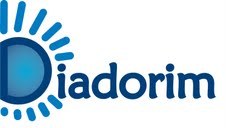Nível de atividade física de servidores idosos em período de pré-aposentadoria da Universidade Federal do Maranhão - UFMA / Level of physical activity of servers in elderly pre-retirement period of the University of Maranhão - Brasil
DOI:
https://doi.org/10.18764/Keywords:
Atividade Motora, Estado nutricional, Saúde Pública, Esporte, Ortopedia, Reumatologia,Abstract
Introdução: A prática de atividade física diminui com o envelhecimento e essa é umas das principais causas da elevada incidência de doenças não transmissíveis observada entre idosos. Objetivo: Avaliar o nível de atividade física de servidores idosos, em período de pré-aposentadoria, da Universidade Federal do Maranhão, e verificar sua associação com sexo e indicadores antropométricos do grupo. Métodos: Participaram do estudo 50 servidores em período de pré-aposentadoria, com 60 anos ou mais. O nível de atividade física foi avaliado por meio do Questionário Internacional de Atividade Física (versão curta). A avaliação antropométrica foi realizada através do Índice de Massa Corporal - IMC, Circunferência da Cintura - CC, e Relação Cintura Quadril - RCQ. Para comparar as variáveis antropométricas, por nível de atividade física, foi utilizado o teste t de Student. As proporções de inatividade foram avaliadas, segundo estado nutricional e sexo, utilizando-se o teste do quiquadrado. O nível de significância adotado foi 5%. Resultados: A taxa de inatividade física foi de 64%, não havendo diferença significativa entre os sexos (p=0,67). Dos indicadores antropométricos investigados, apenas a RCQ mostrou-se associada à inatividade física no grupo (p=0,04). Indivíduos ativos (61,11%) apresentaram taxas de gordura andróide significativamente maiores que indivíduos inativos (31,25%). Conclusão: A inatividade física foi elevada nos servidores estudados, que deve ser alvo de ações de incentivo à prática regular de atividade física e adoção de estilos de vida mais saudáveis.
Palavras-chave: Idoso. Atividade Motora. Estado nutricional.
Abstract
Introduction: Practice of physical activities decreases with aging, and this is one of the main causes of the increase of Noncommunicable Diseases - NCD, observed during the old age. Objective: To analyze the level of physical activity of old public servants of the Federal University of Maranhão in the period of pre-retirement and verify its association with sex and anthropometric indicators of the group. Methods: 50 servants in the period of pre-retirement participated of this study, being 60 or more years of age. The level of physical activity was analyzed through the IPAQ (International Physical Activity Questionnaire). The anthropometric evaluation was performed by using the Body Mass Index - BMI, Waist Circumference - WC, and the Waist to Hip Ratio - WHR. The Student's t test was used to compare the anthropometric variables with the level of physical activity. The proportions of inactivity were evaluated according to nutritional status and gender, using the chi-square test. We used a significant level of 5%. Results: The rate of physical inactivity was 64%, and there was no significant difference between genders (p=0.67). Of the anthropometric indicators, only the relation between hip and waist showed an association with the physical inactivity of the group (p=0.04). Active individuals (61.11%) had significantly higher rates of android fat than inactive individuals (31.25%). Conclusion: The physical inactivity was high in the individuals of this study. This finding should be the center of motivation for encouraging the regular practice of physical activity and the implementation of healthier lifestyles.
Keywords: Aged. Motor activity. Nutritional Status.
Downloads
Downloads
Published
How to Cite
Issue
Section
License
Direitos autorais Revista de Pesquisa em Saúde
Este obra está licenciado com uma Licença Creative Commons Atribuição-NãoComercial-SemDerivações 4.0 Internacional.







